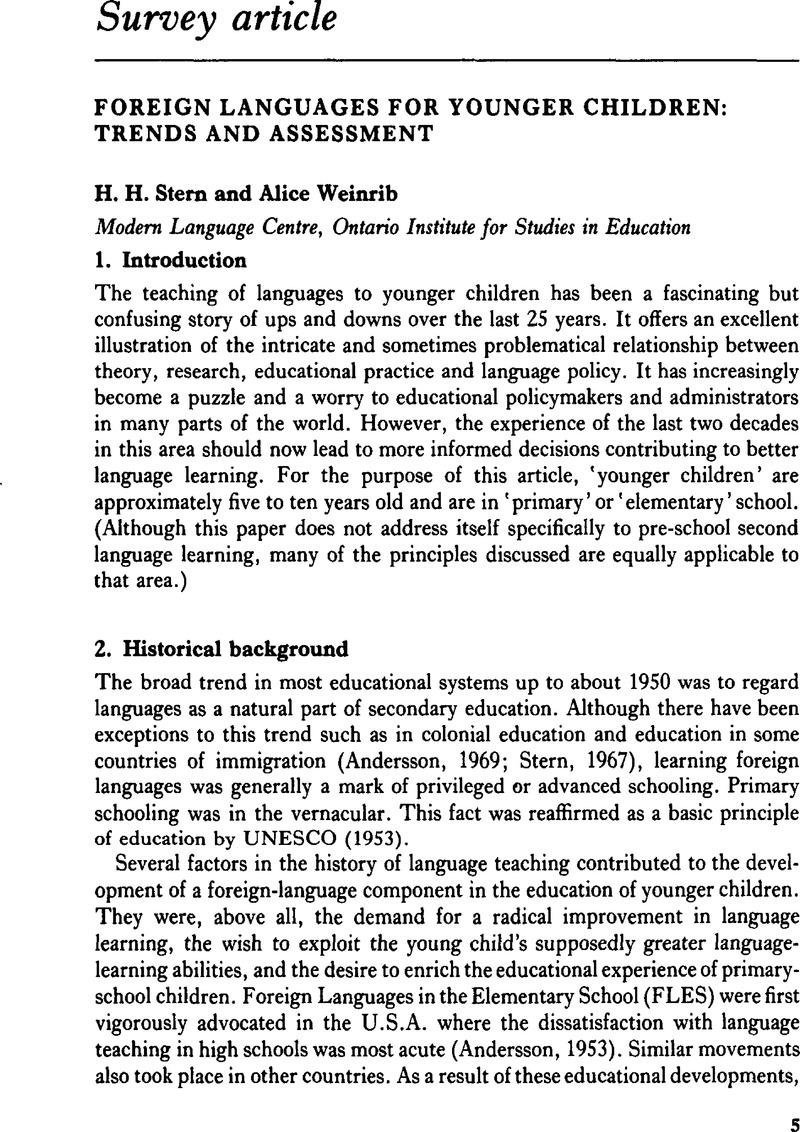Crossref Citations
This article has been cited by the following publications. This list is generated based on data provided by Crossref.
Marks, Sonia
1979.
What is the Optimum age for learning a foreign Language?.
Australian Review of Applied Linguistics,
Vol. 2,
Issue. 2,
p.
63.
Harris, John
and
Murtagh, Lelia
1988.
National assessment of Irish‐language speaking and listening skills in primary‐school children: Research issues in the evaluation of school‐based heritage‐language programmes.
Language, Culture and Curriculum,
Vol. 1,
Issue. 2,
p.
85.
Heining‐Boynton, Audrey L.
1990.
Using FLES History to Plan for the Present and Future.
Foreign Language Annals,
Vol. 23,
Issue. 6,
p.
503.
Mägiste, Edith
1992.
Second language learning in elementary and high school students.
European Journal of Cognitive Psychology,
Vol. 4,
Issue. 4,
p.
355.
Trim, John
1996.
Modern languages for European citizenship.
Language Teaching,
Vol. 29,
Issue. 2,
p.
81.
Kubanek-German, Angelika
1998.
Primary foreign language teaching in Europe – trends and issues.
Language Teaching,
Vol. 31,
Issue. 4,
p.
193.


